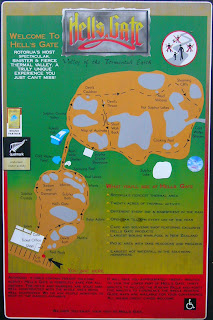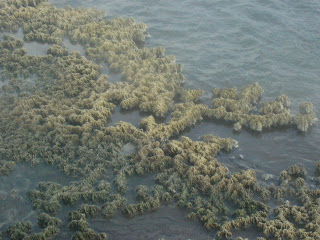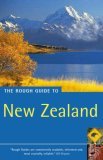At Hell’s Gate, you will find Wai Ora Spa. Hell’s Gate or Tikitere has been known by the local Maori for over 800 hundred years. It is renowned as a place of healing and revitalizing. Besides its sulphurous waters, its specialty is also in its mud! The mud found at Hell’s Gate is very fine (smooth) and it is said to be among the finest in the world. If you are into spa and body mud, you may wish to visit Wai Ora Spa when you are in Rotorua.

Signpost to Wai Ora Spa
Hell’s Gate, Rotorua, May 2006
This is not the typical commercial spa with enclosed or private rooms. Instead, it is in the outdoor and each pool is separated by wooden partitions which offer little privacy. No skinny dipping or frolicking in the buff! Bring your swimming trunk/costume if you want to enjoy the mud spa. By the way, while I was seated in the pool, Wai Ora staff came in and put a dipstick into the water to measure water temperature.
Each pool is a rectangular concrete pool which holds the warm muddy water. So where was the mud? Well, I had to scoop (or scrape) it from the bottom of the pool with my fingers! There was not much mud to play with but sufficient to coat all over my body. The mud was easy to spread and felt very smooth. After coating myself, I sat on the pool edge to let the mud dry up. It was very late autumn and the wind was a little chilly. So after a while I was back inside the pool to enjoy the warm water, then coating myself with mud again and letting it dry up.
It would have been better if there was more mud in the pool. The mud in Hell’s Gate must be a precious commodity as it is also used in a range of beauty spa products. More in the pool means less products to go around.
When the time came to leave the mud pool, I had to do the unpleasant thing of taking a cold shower to wash off all the mud before heading over to the hot sulphurous pools for a good soak.
The spa was a good experience! I felt really good and relaxed. My skin felt smooth too except that I carried the smell of sulphur for another few more days.

Signboard – Map of Hell’s Gate
Hell’s Gate, Rotorua, May 2006







































